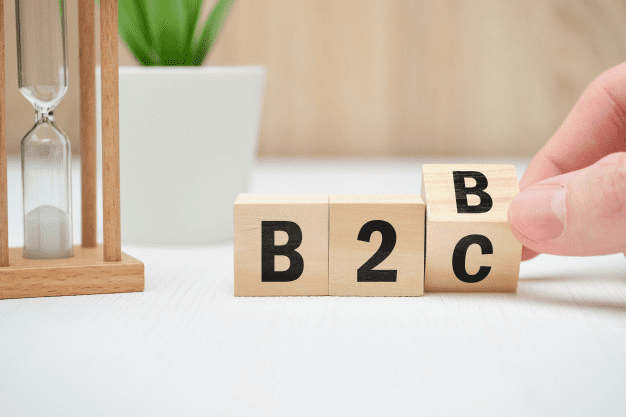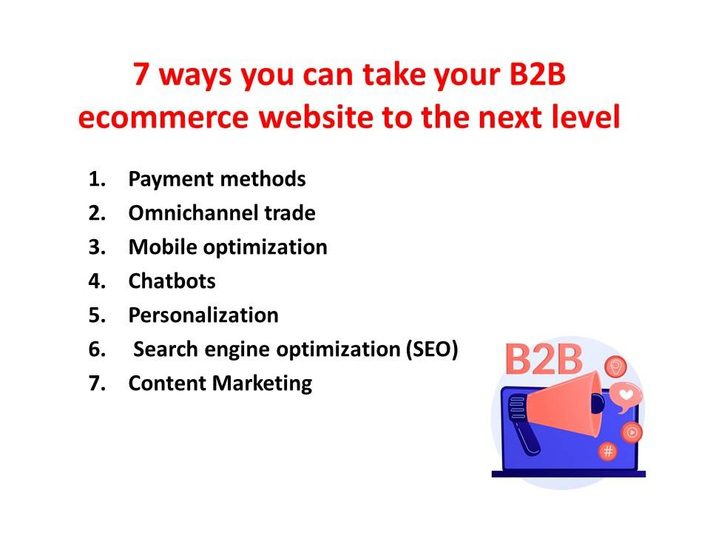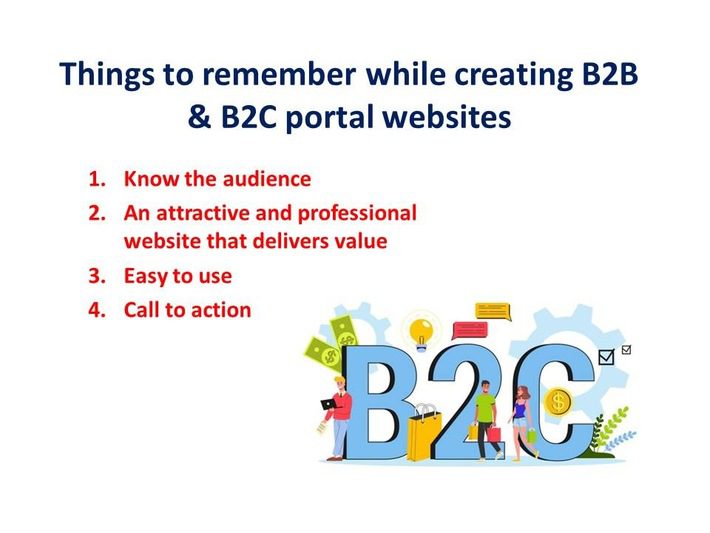
Today, many B2B customers are turning to B2B websites to buy their products and services outright. While B2B companies receive value from customer satisfaction within their operational procedures, today’s customers are looking for companies that go beyond their expectations.
The fact is, most B2B buyers are also consumer buyers, and where B2B customer experiences have improved, the B2B buying process often has not. B2B buyers now expect a more B2C-like customer experience when buying from a supplier.
If you are a B2B company, you must adapt your current website to meet the demands of B2B buyers, or else you risk losing potential business.
According to a Gallup study, only 29% of B2B customers are fully engaged and invested in the companies they do business with. This means that 71% are willing to change gears and take their business elsewhere if the right opportunity presents itself.
And I hope you don’t want to be the business on the 71% side of this equation. You need to increase customer retention figures with an eCommerce website that fosters loyalty, fosters engagement, and attracts new customers through streamlined and optimized shopping experiences.
Here are seven ways you can take your B2B eCommerce website to the next level

1. Payment methods
One of the biggest mistakes we see companies make is creating websites and experiences for customers and then assuming they will arrive. This is not the case. You need to search for customers and bring them to your website actively.
A paid and organic media strategy should be established before building your website. Be prepared and willing to spend money and resources to attract your customers to your business through channels such as display advertising, search marketing, social media, and email.
2. Omnichannel trade
Developing an omnichannel b2c portal development strategy for your business will provide your customers seamless navigation throughout the purchase process. Customers want to buy when and where they want, through any channel or on any device.
An omnichannel strategy captures that tech-savvy customer who expects a variety of delivery options. These customers may start their search on their tablet, but they keep shopping and eventually shop on their laptop later that night. This omnichannel experience will give them the power and consistency to access all touchpoints in the purchase process.
Perhaps most importantly, an omnichannel approach will provide you with data that tracks your customer’s buying process across all the channels you employ, giving you a complete view of your customers and their buying habits. This is key to a strong customer experience management (CMX) strategy. This data will help you identify and implement opportunities to personalize and optimize each specific shopping experience.
3. Mobile optimization
In 2019, the average American adult spent 2 hours and 55 minutes on a smartphone, an increase of 9 minutes from 2018. With this increase in mobile browsing time, your business needs to provide a seamless and seamless mobile platform.
57% of mobile device users say they will not recommend a company with an underdeveloped mobile platform.
Not only should your B2C website be able to provide the information your customers are looking for, but this information needs to be translated across all devices (mobiles, desktops, and tablets). If there are setbacks or discrepancies between experiences, potential customers can land on a competitor’s site.
Your mobile-optimized website should not only include information relevant to your product, but it should be responsive and designed with a flawless mobile payment system or chatbot feature to help you with additional questions and answers.
4. Chatbots
Chatbots are extremely useful for your business. They can help you up-sell or cross-promote products, and more importantly, they can answer questions or concerns from your site visitors 24/7.
Customers can leave your site if they have difficulty finding information or have problems with payment. According to a study commissioned by Genesys, a well-crafted chatbot feature can result in a 50% reduction in customer cart abandonment at critical points in the customer journey.
5. Personalization
Personalizing the shopping and selling experience is not just for B2C consumers; it should also be at the center of B2B e-commerce. B2B operations have a long history of building offline relationships and long-term contracts. Today, in the digital landscape, a company must bring this personalized experience to its customers online if they want to stay current and competitive.
To enhance your b2b portal development with personalization, you need to provide your customers with a personalized dashboard, pricing elements, and specific offers and offers only available to them. A great customized e-commerce website will give the customer the feeling that they are still a person and not just a business transaction.
6. Search engine optimization (SEO)
An eCommerce SEO strategy is essential for any business, no matter where or how you sell your product. Most people start their searches with generic terms and not with brand terms. If you don’t correctly implement an SEO strategy, you may never show up in a search query, and you could lose your customers to more optimized competitors.
50% of visitors are more likely to click on a result if the brand appears multiple times in search engine results. If you’ve optimized your site and content using an SEO strategy, your business will appear the most frequently. And your name will present potential customers with an answer to their problem – your product.
7. Content Marketing
Along with a comprehensive SEO plan, content marketing is a great way to build relationships with potential customers. 89% of companies use content marketing, and of that 89%, 53% have been moderately successful, 19% have been very successful, and 3% have been very successful.
To join this successful 75%, use the content to become a visible expert in your specialized field. Blogs and other dynamic content will set you apart and educate your customers, and position you and your company as leading thinkers in the industry. These interactions can help drive traffic to your site and build trust in your audience.
Sharing current trends, tips, and industry-related news or current promotions will keep your customers interested and informed about your product. The more you interact with your audience, the more you become a thought leader in your field and a source they know and trust.
Things to remember while creating B2B & B2C portal websites

1. Know the audience
Small businesses need to understand who is viewing their website and target the copy, images, and other aspects of the website to those viewers. You will write a different copy for an older customer base than for teenage girls. If your website consists of a B2C and a B2B part, use simpler terms for the client-side and professional industry terms for the business. Consider offering portals on the home page so that companies and customers can go to the appropriate section.
2. An attractive and professional website that delivers value
Spend time, effort, and money building a professional website because customers and business partners can question your competition if the website is missing. Suppose you don’t have the money to hire a graphic designer, look for one of the many web hosting companies that offer attractive templates.
Hire a copywriter who can provide a concise, powerful, and grammatically correct copy. Images attract attention, and you should use them to your advantage. Show professional photos of your products. Include other points of interest that will keep your visitors on your website and hopefully encourage them to bring others to it, such as interesting information about products or the industry. Update the website regularly.
3. Easy to use
No matter who your site visitors are, they will want a website that is easy to read and understand. Make sure the font and color scheme are legible and aesthetically pleasing. Add convenience features like categories, a site map, and an accessible portal to communicate with your business. Don’t clutter the page too much. Test the website thoroughly to make sure all parts are working. Instructions should be clear and straightforward, especially for clients.
4. Call to action
Before creating your website, plan each page with a purpose. A call to action will drive sales or even create them through the website. If you plan to sell over the Internet, make it easy for customers to read, search, and sort items. Include important information like terms and policies. For the B2B part, consider what you want to portray and receive from your business partners. Encourage them to contact you.
Wrapping Up
Improving your B2B eCommerce website to meet today’s customers’ needs goes beyond a simple upgrade to your existing eCommerce site. Today’s customers are looking for more than just products. They are looking for easy ways to shop, answers to their questions, personalized experiences, and a knowledgeable company that can help them advance their own business.
If implemented correctly, these seven techniques will enhance your website experience in a way that will meet and exceed the expectations of your B2B customers. All you need to do next is hire developers online and give your business the gift of success.
